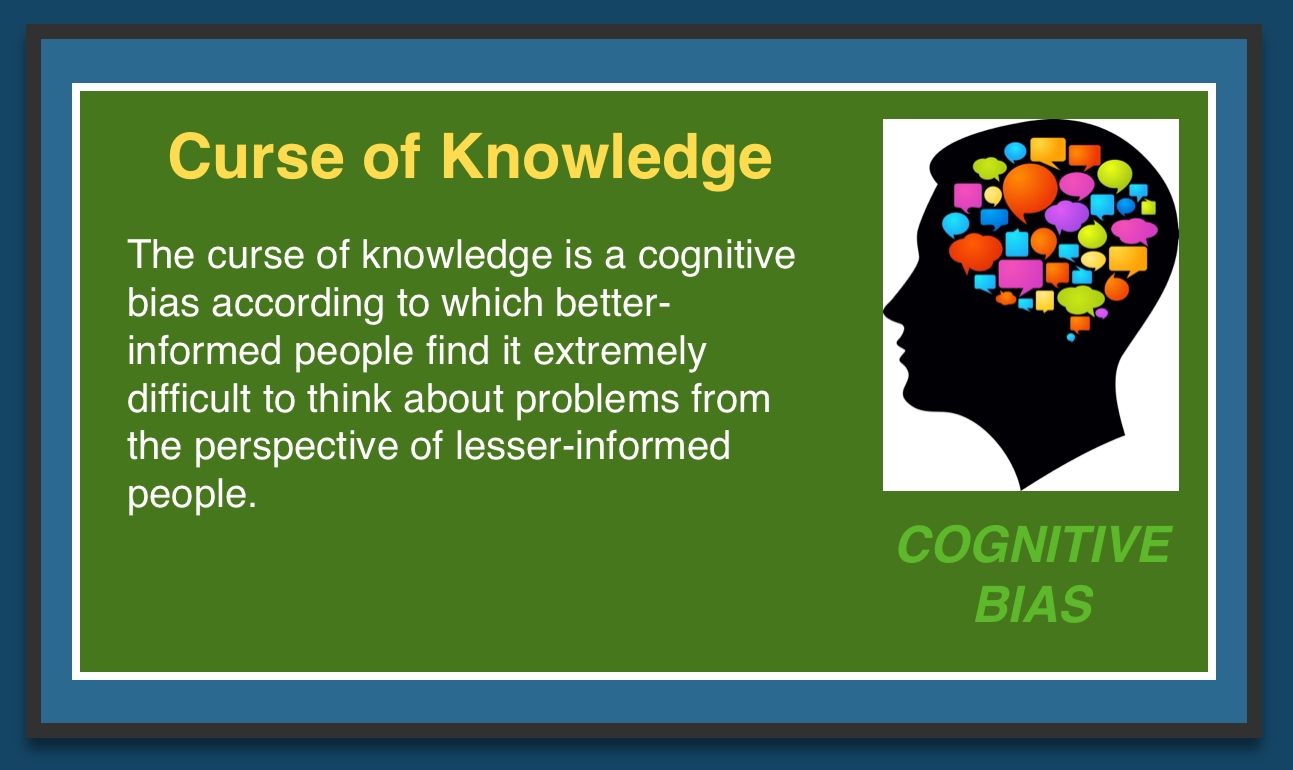The curse of knowledge is a cognitive bias that occurs when individuals who are knowledgeable about a particular topic or subject find it challenging to understand or communicate with others who lack that knowledge. It can lead to ineffective communication and difficulty in simplifying complex ideas for others.
Explanations:
The curse of knowledge stems from a difficulty in taking on the perspective of someone with less knowledge. When individuals are deeply familiar with a subject, they may struggle to recall what it was like not to know about it.
Examples:
Expert Presentations: A subject matter expert may give a presentation full of jargon and technical details, making it difficult for a non-expert audience to understand.
Teaching: Professors or educators may unintentionally assume that students have more prior knowledge than they do, making it challenging for the students to grasp new concepts.
Professional Communication: In the workplace, employees who are experts in their field may struggle to explain their work to colleagues from different departments.
Solutions:
Empathize: Make an effort to put yourself in the shoes of someone with less knowledge. Try to recall what it was like before you acquired your expertise.
Simplify Communication: When explaining complex concepts, use plain language, avoid jargon, and provide relatable examples to make the information more accessible.
Feedback: Seek feedback from your audience to ensure they are understanding the information, and be open to adjusting your communication style based on their responses.
Teaching Mindset: Approach communication with the mindset of a teacher, aiming to convey information in a way that is easily understood by others.
Addressing the curse of knowledge requires recognizing the challenges that arise when communicating with individuals who lack the same level of expertise and actively working to bridge the knowledge gap through effective and empathetic communication.
